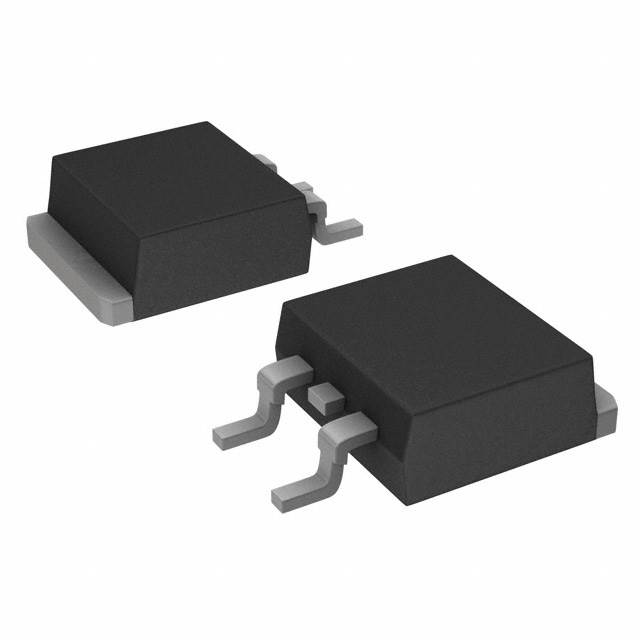
IDK20G120C5XTMA1
ActiveSILICON CARBIDE SCHOTTKY DIODE, COOLSIC 5G SERIES, SINGLE, 1.2 KV, 56 A, 82 NC, TO-263 (D2PAK)
Deep-Dive with AI
Search across all available documentation for this part.

IDK20G120C5XTMA1
ActiveSILICON CARBIDE SCHOTTKY DIODE, COOLSIC 5G SERIES, SINGLE, 1.2 KV, 56 A, 82 NC, TO-263 (D2PAK)
Deep-Dive with AI
Technical Specifications
Parameters and characteristics for this part
| Specification | IDK20G120C5XTMA1 |
|---|---|
| Current - Average Rectified (Io) | 56 A |
| Current - Reverse Leakage @ Vr | 123 µA |
| Mounting Type | Surface Mount |
| Operating Temperature - Junction [Max] | 175 ░C |
| Operating Temperature - Junction [Min] | -55 C |
| Package / Case | D2PAK (2 Leads + Tab), TO-263AB, TO-263-3 |
| Speed | No Recovery Time |
| Supplier Device Package | PG-TO263-2-1 |
| Technology | SiC (Silicon Carbide) Schottky |
| Voltage - DC Reverse (Vr) (Max) [Max] | 1.2 kV |
| Voltage - Forward (Vf) (Max) @ If | 1.8 V |
Pricing
Prices provided here are for design reference only. For realtime values and availability, please visit the distributors directly
| Distributor | Package | Quantity | $ | |
|---|---|---|---|---|
| Digikey | Cut Tape (CT) | 1 | $ 10.59 | |
| 10 | $ 7.31 | |||
| 100 | $ 5.45 | |||
| 500 | $ 4.92 | |||
| Digi-Reel® | 1 | $ 10.59 | ||
| 10 | $ 7.31 | |||
| 100 | $ 5.45 | |||
| 500 | $ 4.92 | |||
| Tape & Reel (TR) | 1000 | $ 4.92 | ||
| Newark | Each (Supplied on Cut Tape) | 1 | $ 8.38 | |
| 1 | $ 8.38 | |||
| 10 | $ 5.93 | |||
| 10 | $ 5.93 | |||
| 25 | $ 5.47 | |||
| 25 | $ 5.47 | |||
| 50 | $ 5.00 | |||
| 50 | $ 5.00 | |||
| 100 | $ 4.54 | |||
| 100 | $ 4.54 | |||
| 250 | $ 4.39 | |||
| 250 | $ 4.39 | |||
| 500 | $ 4.23 | |||
| 500 | $ 4.23 | |||
| 1000 | $ 3.97 | |||
| 1000 | $ 3.97 | |||
Description
General part information
IDK20G120 Series
TheCoolSiC™ Schottky diodes generation 51200 V, 20 A is now available in a D2PAK real 2-pin package. Connecting SiC diodes in parallel and in a small device package, a high efficient system can be achieved while minimizing board space requirement. The elimination of the middle pin reduces a risk of partial discharge at high voltage and high frequency operation.
Documents
Technical documentation and resources


